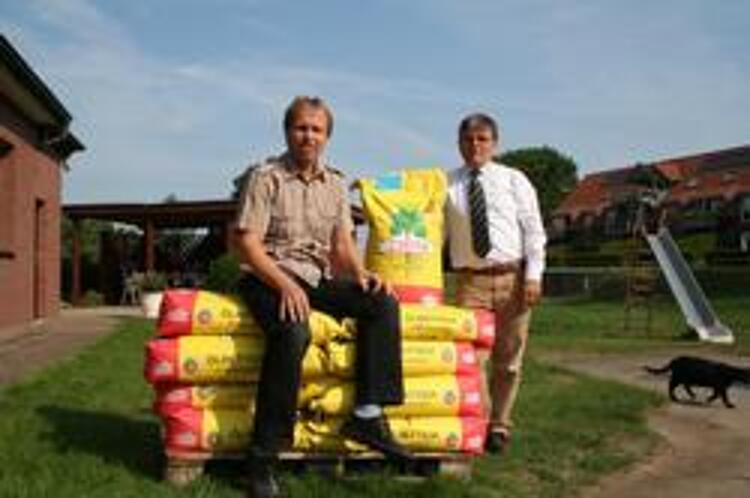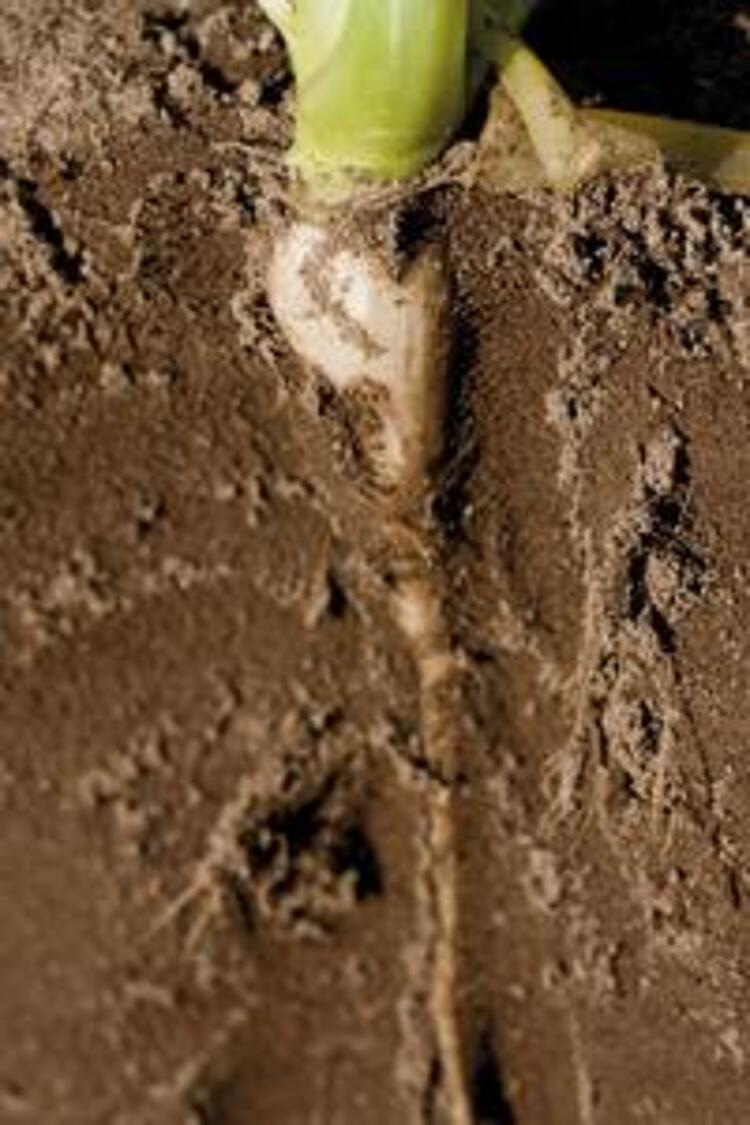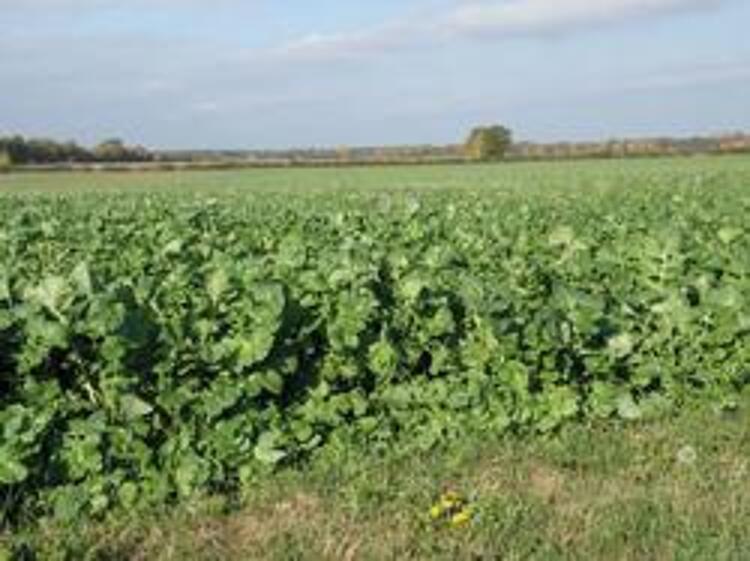
A crop rotation of winter barley – sugar beet – potato is rather unusual in Germany, because planting a very high proportion of root crops always brings with it a substantial phytosanitary risk.
But Peter Hinze, a farmer from Neu Wulmstorf, just south of Hamburg, has been cultivating potatoes after sugar beets for ten years now. By growing oil radish after winter barley for nematode control, this crop rotation can be highly economical.
Peter Hinze makes his living with root crops. "Everything else is more or less a sideline." Hence, his ultimate goal is to ensure a long-term high yield of sugar beet and potatoes.
With such a high proportion of root crops, the issue of crop-rotation diseases takes a very high priority. "About ten years ago, our sugar beet factory started to look into mulch-tillage with sugar beets, and mulch-tillage is currently being promoted by the agricultural support system" says Hinze, reflecting back on the beginnings. "That’s how I got into regularly growing catch crops. Over the past 10 years, I’ve been continuously refining my oil radish cultivation, and this process is still continuing to evolve."

"I cultivate oilseed radish as a main crop - that way I can be sure to make the best of its advantages: nematode control and promoting tilth and water balance." That means, above all, timely sowing with a seed drill at relatively high seed rates, as well as sufficient nitrogen fertilisation. "For me, oil radish is not merely an in-between crop."
"To avoid overworking the soil beforehand, I only plough in spring, just before the sugar beets go in. It is quite obvious that the oil radish develops better in the ploughed soil - both above and below ground" Hinze says, describing what his experience has shown to be the optimal soil cultivation. Even if oil radish is known for its good root penetration, compacted soil will stunt its development. Root penetration, however, is necessary to combat soil nematodes effectively - that is, beet cyst nematodes and trichodorids, the carriers of the tobacco rattle virus (TRV) of the potato. "I need to give the roots of the oil radish the chance to grow right down to the nematodes, for the nematodes will not come to the root. A high seed density supports that growth. The greater the competition between individual plants in the crop stand, the higher the proportion of fine roots in the soil, and the more successful the control measure!" This is not only Peter Hinze's personal opinion. His advisor, Andreas Henze, shares it.
Andreas Henze therefore recommends for the oil radish CONTRA cultivar a seed rate of about 23-25 kg/ha (about 230 seeds/m²). Such a stand, of course, requires sufficient nutrients. 16 m3 of liquid manure containing about 5 kg N/m3 are standard on Hinze's farm."Since this manure cannot be fully converted in autumn, we supplement it with 50 kg N/ha as UAN (urea ammonium nitrate). I'm really doing well with this strategy,"remarks the farmer, satisfied."Apart from the really very good nematode reduction, the weed suppression is also highly satisfactory. The soil is well penetrated by roots, and I still have enough above-ground organic matter." Once the oil radish stand freezes, it is rolled while the ground is still frozen. The leaves and stems "shatter like glass, and the ground is saved from being compacted by the tractor's weight."
In Hinze's view, getting the seeding time right is vital. "In this region, we don't seed before 15 August - to prevent too many radishes from developing. Because then I would have to get out the forage harvester, and that could damage the soil structure." However, the ideal sowing time is always balancing act. "If I seed too late, and the growing season turns out to be unusually short, not enough of the crop takes root. The plants must have at least six weeks to develop." Is the much-talked about climate change also in evidence here? "Last year we could see some growth in early November, but usually it's over by mid- to late October. Nevertheless, the trend seems to be a lengthening growing season," Hinze remarks reflectively.
The "number one priority", though, remains avoiding the formation of a radish crop. Reaching the generative phase also needs to be avoided, because radish seeds in the soil remain viable for decades. "You should choose varieties that don't tend to form a crop and that don't bloom too early" Hinze advises. "This year I focused on the new CONTRA variety, but I've also achieved good results in recent years with DEFENDER."

The ultimate question is, of course, whether such an intense catch crop cultivation is profitable. How does the manager work it out? Growing a catch crop before cultivating potatoes is not possible under the operating conditions, because the soil needs to be free of stones before the potatoes are planted. A high proportion of organic matter would make this step more difficult.
Growing a catch crop, however, increases both the sugar beet yields and the size of the sugar beets' leaves. More sugar beet leaves means more potash will return to the soil, and therefore less fertilizer will be needed - and so the potato crop will benefit indirectly here.
Because the sugar beets go in directly after the oil radish, they naturally profit more from this preceding crop. And it's about much more than reducing disease vectors. "Apart from the phytosanitary effect, the sugar beets find it much easier to root, and the roots penetrate much deeper. That way they can use the existing water better. Overall, the water balance appears to be better regulated after catch crops: in heavy rain, the water drains more easily, and the crops are better equipped to withstand dry spells."
The dead organic matter left by the catch crop binds water and reduces evaporation and soil erosion, which of course is also good for the beets. The positive effect on the water balance was shown very clearly in what was an extremely dry early summer for the region south of Hamburg: Sugar beets following oil radish endured for 1-2 weeks longer. But in this drought year, naturally, we didn't see the top yields of previous years, Peter Hinze admits.
It is the sum of a variety of effects that makes a good yield, Peter Hinze is sure: "Over the last ten years, growing sugar beet after oil radish has yielded 80-100 dt/ha more than without the radish. " Given such a return, the approximately 120 €/ha extra costs for the oil radish are hardly worth mentioning.